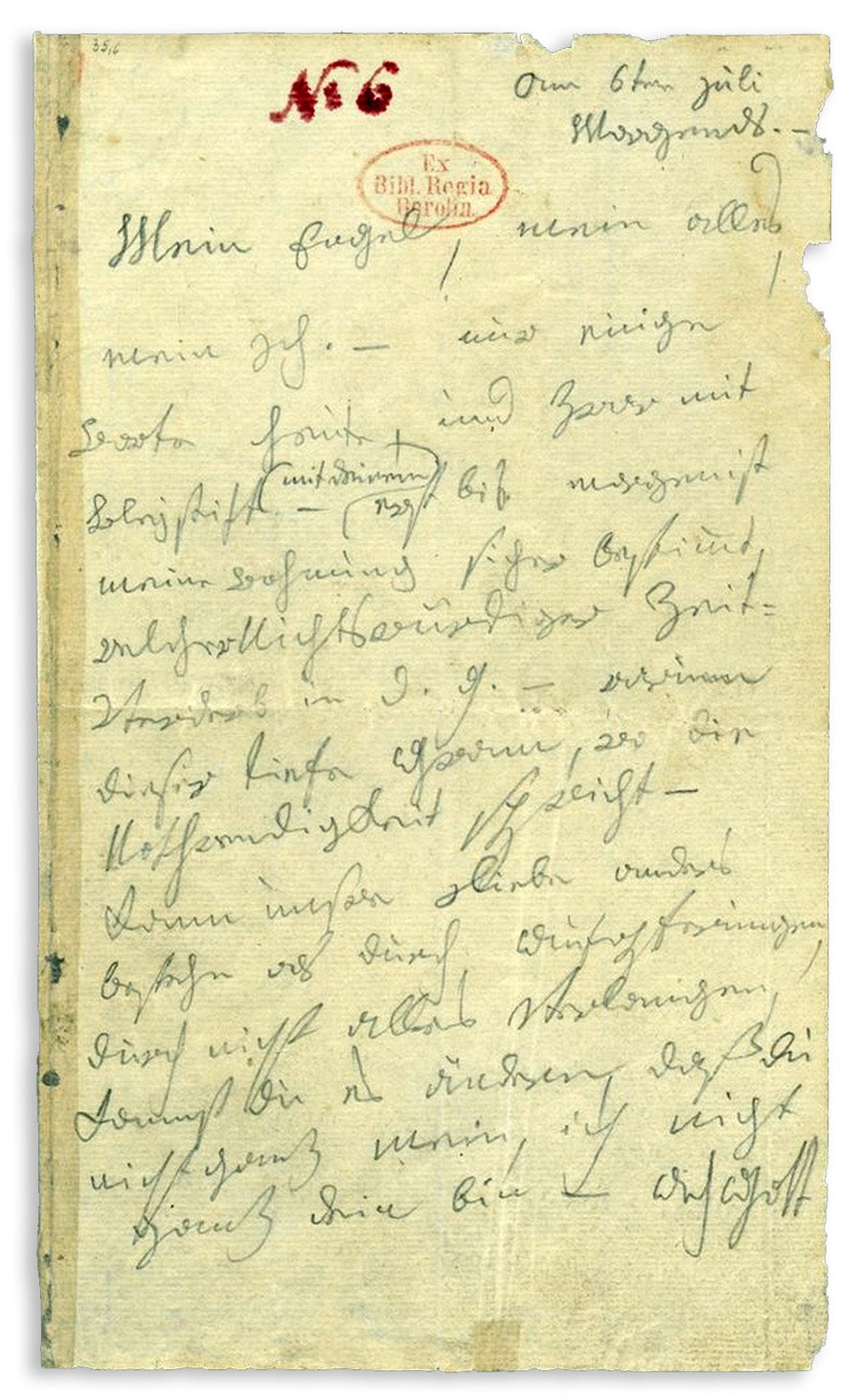It’s one of the great mysteries of music history, as high in the ranks as “Who wrote the Renaissance lover’s tribute ‘Greensleeves’” and “How did Amadeus Mozart really die?” In eighteenth- and early nineteenth-century Europe, correspondence was a private means of communication, and some clandestine love affairs conducted in secret succeeded in evading confirmation from even the most determined detectives. Which is why the world is still wondering, centuries after the question was first asked, “Who was Beethoven’s ‘Immortal Beloved?’”
Ludwig van Beethoven (1770–1827), German-born genius of classical composition, never married, but he had romantic feelings for many women throughout his life, even as he was plagued by debilitating hearing loss and frequent bouts of extreme depression. This explains why the list of names of women who are eligible to be his “Immortal Beloved” is a mile long. On either July 6 or July 7, 1812, Beethoven penned a passionate letter in which he bestowed upon the addressee the monikers of “my angel” and “my dearest creature,” but most memorably “Immortal Beloved.” He wrote in frustration of travel plans gone awry and the unbearable restlessness he was suffering as a result of separated from the addressee. This invaluable historic document, ten pages long and scribbled hastily in pencil, was discovered among Beethoven’s belongings following his death. The world remains puzzled by it—not just because it was never sent, but because it still isn’t clear for whom it was meant.

Every scholar seems to have their star candidate for Beethoven’s great love. Music historian Sylvia Bowden, attempting a deciphering campaign for The Musical Times, writes that “painstaking research by San Galli and Max Unger paved the way for Maynard Solomon to identify the recipient of this letter as Antonie Brentano, a married woman with four children.”
Bowden makes a solid case for Brentano, but she’s contested by Rita Steblin, who champions Josephine Brunsvik-Deym-Stackelberg, an (also married) Hungarian noblewoman with whom Beethoven was known to have had a relationship. Steblin’s theory draws from the detailed writings of Josephine’s sister Therese—another woman with whom Beethoven was involved romantically and yet another possibility as the intended recipient of the letter—which provide useful evidence regarding Beethoven and Josephine’s possible rendezvous. From Therese’s memoirs, writes Steblin, we learn that Josephine
still owned a coach and horses, and since she had planned to visit the spa at Karlsbad in summer 1812, what would have hindered her from making an unannounced trip to Prague in late June 1812? And now came…the unexpected encounter with Beethoven on 3 July 1812, and their night together. From his letter, we know that Beethoven thought his “Immortal Beloved” would be travelling on to Karlsbad, and that they would probably (he used the word “wohl” = possibly, hopefully) see each other soon.
Beethoven’s piano student Julie “Giulietta” Guicciardi, the dedicatee of his “Moonlight Sonata,” also has a loyal camp, as do his close friend Countess Anna Maria Erdődy, the singer Amalie Sebald, and a scattering of others. Beethoven was generous with his wild affections. In 1994, Bernard Rose directed and released the film Immortal Beloved—starring Gary Oldman as the fiery composer unlucky both in health and love—which strives to solve the riddle in its own way, eventually drawing a very unexpected conclusion for cinematic purposes.
Weekly Newsletter
The truth itself remains eternally elusive, and the letter is considered by many to be Beethoven’s most tender ode, whoever the intended receiver. It’s currently being kept safe by the Staatsbibliothek zu Berlin, the Berlin State Library.
Three Tips for Teaching
Consider a possible Irish connection. Historian Andreas Boldt argues that Beethoven’s Irish folk songs may offer fresh insight into this letter-writing mystery.
Listen to performances of Beethoven’s music. Audio recordings are available on the National Jukebox and elsewhere.
Support JSTOR Daily! Join our membership program on Patreon today.







